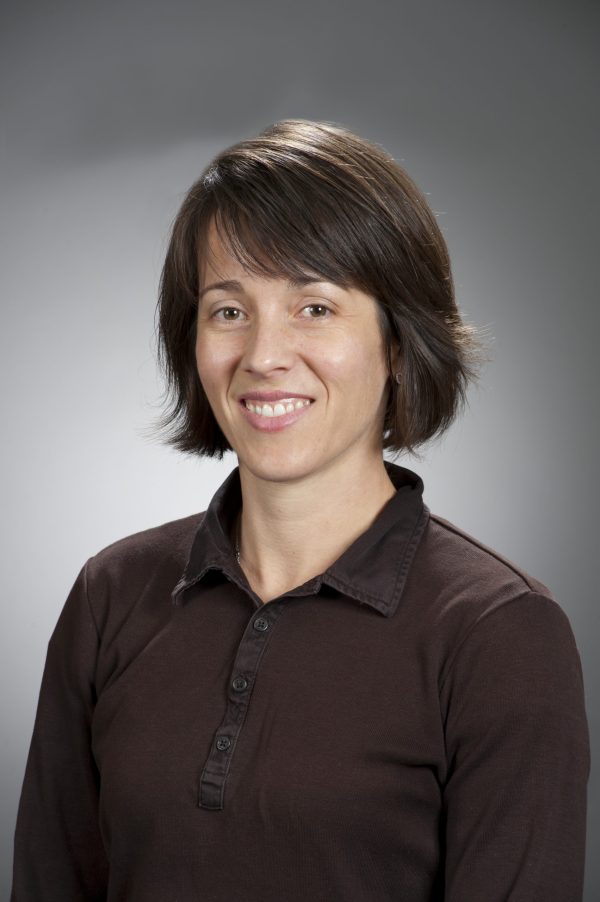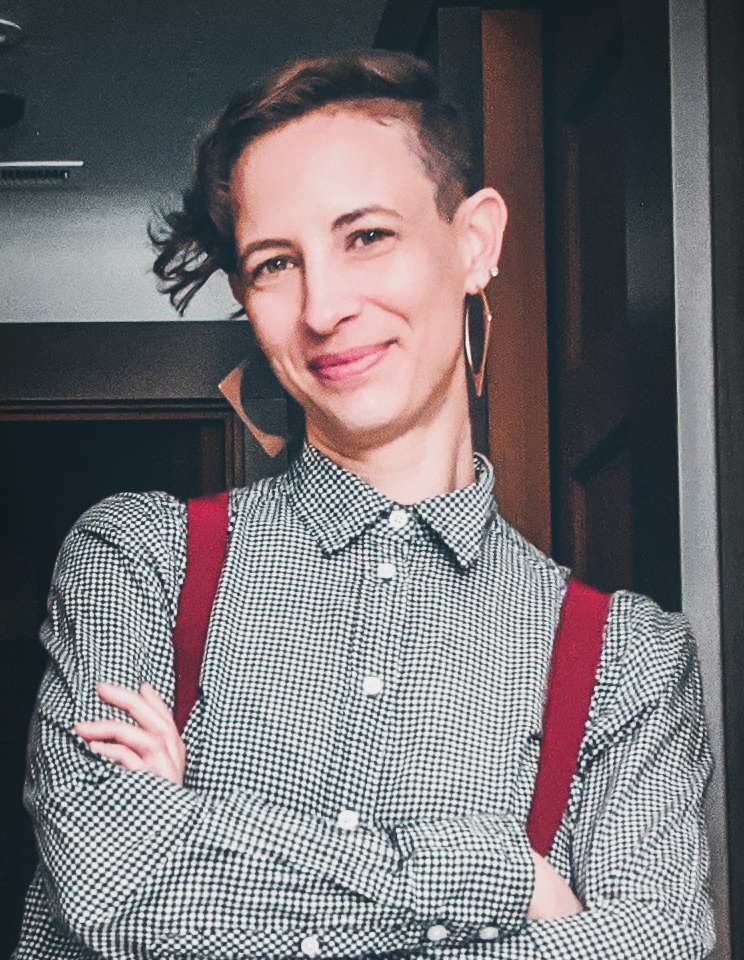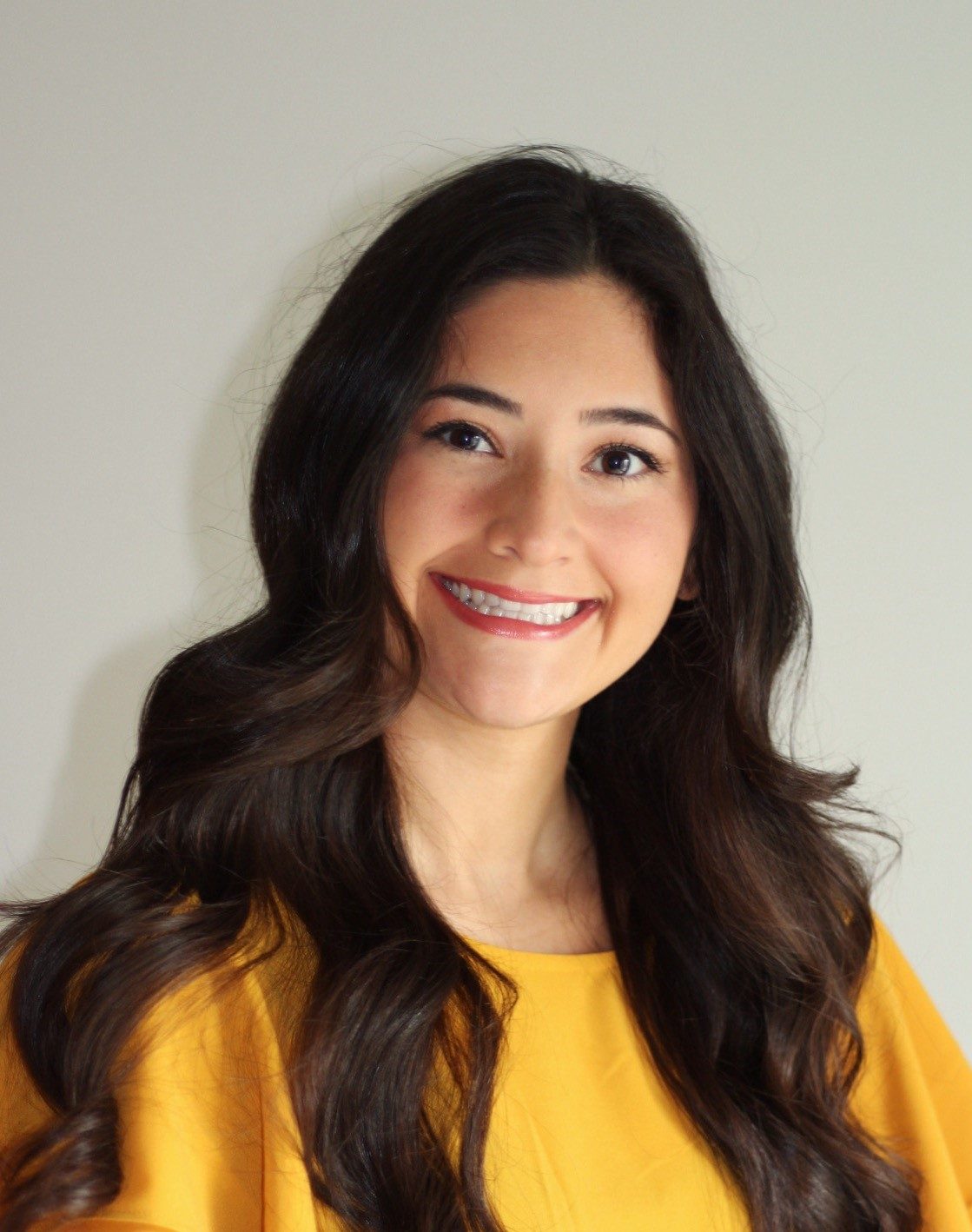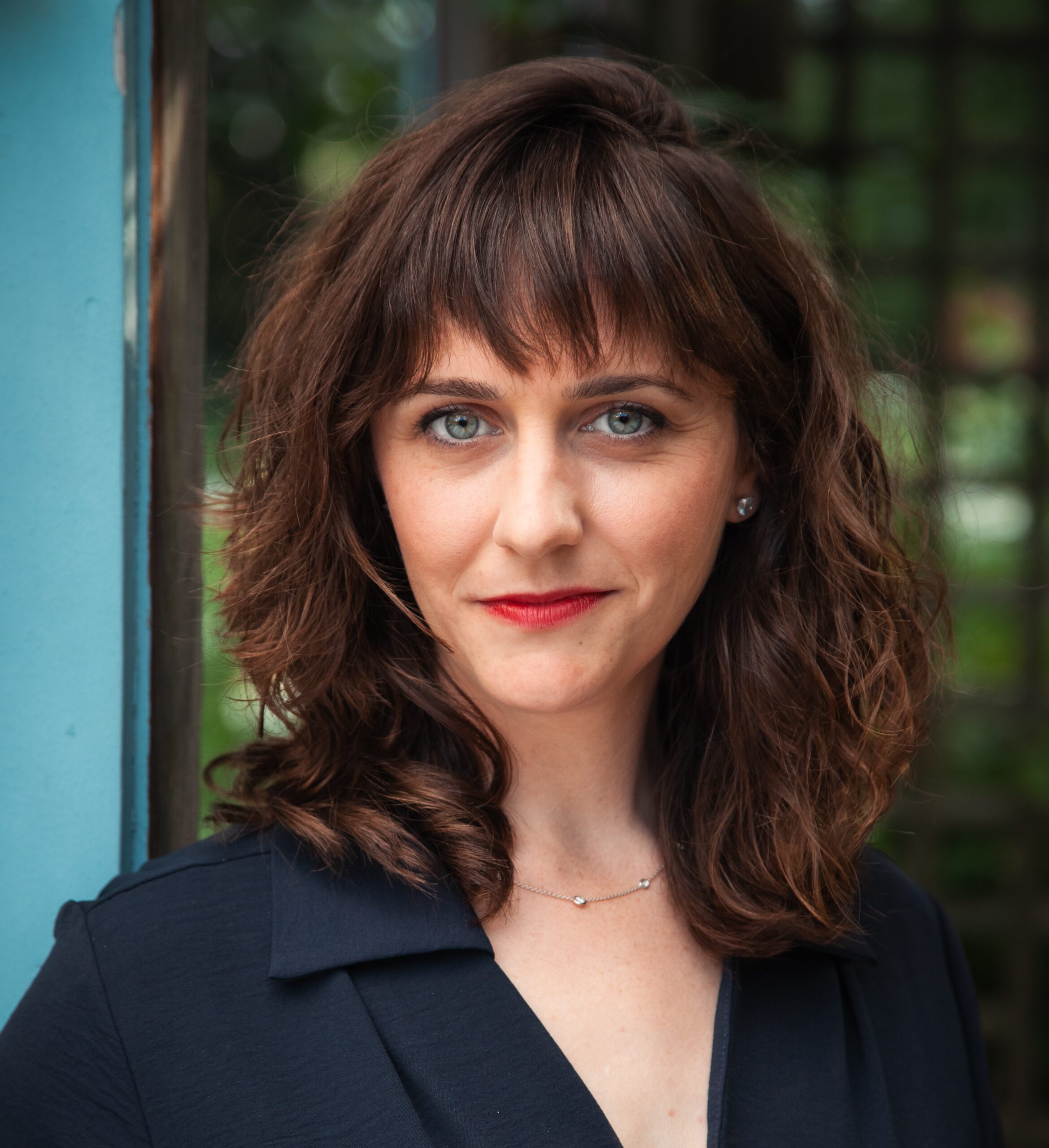
Jennifer Patterson, PT, DPT
Jennifer Patterson, PT, DPT
Jennifer Patterson – Endometriosis Physical Therapist
Summary: Jennifer Patterson, PT, DPT, is a dedicated endometriosis physical therapist at Dignity Health Yavapai Regional Medical Center in Prescott, AZ. Jennifer Patterson’s philosophy centers on treating the whole person, emphasizing compassionate listening, collaboration, and patient education. She customizes care plans using manual therapy, therapeutic exercises, and neuromuscular reeducation to address each patient’s unique needs. Jennifer Patterson believes in integrating alternative therapies like massage, acupuncture, and psychotherapy to enhance healing and quality of life. Working closely with patients from initial evaluation through discharge and beyond, she ensures continuous support and tailored treatment. Jennifer’s approach fosters empowerment and holistic well-being, helping patients manage endometriosis symptoms effectively while promoting overall health. With a warm, professional style, Jennifer Patterson prioritizes personalized care, making her a trusted specialist for those seeking comprehensive pelvic health treatment in Arizona.
Visit types: Office/Hospital
Spoken languages: English
Interpreting services for other languages: Yes
Philosophy of care and typical treatment strategies: My philosophy of care for patients with endometriosis is to care for the whole person. I listen. I ask questions. I care. I learn. I research. I collaborate. I teach. I work closely with each patient to achieve their goals. I aim to help patients from the beginning to discharge and beyond.
Treatment strategies that I utilize are many. I believe that there is no one way to treat everybody. I will utilize manual techniques and modalities. I will use therapeutic exercises and neuromuscular reeducation activities. I will encourage other alternative treatments, including massage therapy, acupuncture, and psychotherapy. We will work together and collaborate with other professionals as needed to achieve goals.

Ann Nwabuebo, DPT, WCS, PRPC
Ann Nwabuebo, DPT, WCS, PRPC
Ann Nwabuebo – Endometriosis Physical Therapist
Summary: Ann Nwabuebo, DPT, WCS, PRPC, is a compassionate endometriosis physical therapist at Body Connect Physical Therapy in Narberth, PA. With nearly 20 years of experience, Ann Nwabuebo offers expert care using advanced manual therapy techniques such as myofascial release, visceral manipulation, craniosacral therapy, and pelvic floor rehabilitation. Ann Nwabuebo believes in a holistic approach that combines hands-on treatment with education on lifestyle changes and mindfulness to empower patients throughout their healing journey. She collaborates closely with each patient’s healthcare team to ensure comprehensive, personalized care. Drawing from her own experience as a former pelvic pain patient and a mother, Ann Nwabuebo creates a warm, inclusive, and supportive environment focused on healing the mind, body, and spirit. Patients can access her care both in-office and virtually, making expert endometriosis treatment accessible and tailored to individual needs.
Visit types: Office/Hospital; Virtual
Spoken languages: English
Interpreting services for other languages: No
Philosophy of care and typical treatment strategies: Welcome to my profile page! I am a Doctor of Physical Therapy (DPT) and a board-certified pelvic health specialist with almost 20 years of clinical experience.
My mission is to provide all of my patients with safe, expert, compassionate, and comprehensive care. In the treatment of endometriosis, I utilize various advanced manual therapy techniques, including myofascial release, visceral manipulation, craniosacral therapy, scar tissue mobilization, cupping therapy, therapeutic exercise, and internal (vaginal & rectal)/external pelvic floor work.
Working closely with my patients’ team of providers, I also emphasize a lot of education on lifestyle changes and mindfulness practices so my patients feel empowered in how they care for themselves.
As a mother, former pelvic pain patient myself, and a global citizen, I draw from my personal experiences to ensure an inclusive and deeply supportive environment for my patients to heal, mind, body, and spirit.

Tanvi Maharaja, PT, DPT, OCS
Tanvi Maharaja, PT, DPT, OCS
Tanvi Maharaja – Endometriosis Physical Therapist
Summary: Tanvi Maharaja, PT, DPT, OCS, is an experienced endometriosis physical therapist based at Signature Healthcare Brockton Hospital in Massachusetts. Tanvi Maharaja is dedicated to providing compassionate, patient-centered care by creating a safe and supportive environment where patients feel heard and understood. She takes time to explore each patient’s detailed history to tailor treatments that best meet their unique needs. Her approach includes hands-on manual therapy, visceral mobilization, pain modulation, and breathwork techniques aimed at reducing pain and improving function. Tanvi emphasizes collaboration and refers patients to other specialists when needed to ensure comprehensive care. Fluent in English with interpreter services available, she supports diverse patient populations with warmth and professionalism. With a focus on holistic healing, Tanvi Maharaja empowers patients to regain comfort and control over their pelvic health through personalized treatment plans and ongoing support.
Visit types: Office/Hospital.
Spoken languages: English; we have interpreters for all languages
Interpreting services for other languages: Yes
Philosophy of care and typical treatment strategies: Being a conscious clinician, present with the patient, providing a safe space to discuss her history in detail, directing her to the appropriate referrals for best care practices, manual therapy, visceral mobilization, pain modulation, and breathwork as appropriate.

Elizabeth (Betty) DeLass, PT, DPT
Elizabeth (Betty) DeLass, PT, DPT
Betty DeLass – Endometriosis Physical Therapist
Summary: Betty DeLass, PT, DPT, is a dedicated endometriosis physical therapist at Reborn Pelvic Health & Wellness in West Jordan, Utah. She specializes in personalized, compassionate care designed to help patients manage pelvic pain and improve quality of life. Her approach emphasizes a whole-person perspective, addressing not only physical symptoms but also lifestyle factors that impact healing. Betty uses hands-on techniques such as myofascial release and visceral mobilization, combined with tailored exercises and relaxation strategies, to support recovery. She believes in empowering patients with education and self-management tools to confidently navigate their condition. Patients appreciate her warm, trauma-informed care style and her commitment to working collaboratively to meet individual goals. Through her expertise and compassionate approach, Betty DeLass helps those with endometriosis regain function and comfort in daily life.
Visit types: Office/Hospital
Spoken languages: English
Interpreting services for other languages: No
Philosophy of care and typical treatment strategies: We focus on holistic care, incorporating orthopedic and pelvic physical therapy approaches using visceral mobilization, myofascial release, cupping, instrument-assisted soft tissue mobilization, dry needling, therapeutic exercise, and neuromuscular re-education.

Sam Arrow, PT, DPT
Sam Arrow, PT, DPT
Sam Arrow – Endometriosis Physical Therapist
Summary: Sam Arrow is a compassionate endometriosis physical therapist based in Phoenix, Arizona, at Arrow Physical Therapy. Sam Arrow’s approach focuses on educating patients about their bodies and empowering them with tools to manage pelvic floor dysfunction confidently, recognizing the chronic nature of endometriosis.
Using a combination of internal and external manual therapies such as visceral mobilization, scar tissue massage, and myofascial release, Sam Arrow tailors treatment to each individual’s needs. Gentle therapeutic activities like diaphragmatic breathing, yoga stretches, and pelvic floor muscle coordination exercises are also integral to care. Sam addresses related concerns, including constipation, fluid intake, and pelvic organ prolapse, collaborating with trusted local doctors to ensure comprehensive treatment. Patients value Sam Arrow’s trauma-informed, supportive environment where their unique history and symptoms guide personalized care for lasting relief and improved quality of life.
Visit types: Office/Hospital/At home
Spoken languages: English
Interpreting services for other languages: No
Philosophy of care and typical treatment strategies: First and foremost, my goal is to educate patients on how their body functions and how they can self-treat their pelvic floor dysfunction. I will always be available to them, but since endo is a chronic condition, they may need to step away from therapy for periods of time, and I want them to have the tools they need to do it confidently. I incorporate internal and external manual therapy to address muscle tension (visceral mobilization, scar tissue massage, and myofascial release); gentle therapeutic activities such as diaphragmatic breathing, perineal bulging, and yoga-type stretches; dietary changes; tool-assisted pelvic floor muscle stretching (dilators, wand); constipation management; and relaxation exercises that help the patient reconnect with their pelvic floor and build awareness and pelvic floor muscle coordination. Every person is different and will have different needs, so I get the patient’s history and behavior of symptoms, and address what we find in our visits. I may also address fluid intake, toileting, incontinence, and pelvic organ prolapse as needed. I often assist in coordinating care by recommending doctors whom I trust in Phoenix and helping patients learn to self-advocate. I strive to create an environment that is safe and affirming for my patients; I am trauma-informed.

Jennifer Keesee, PT, DPT
Jennifer Keesee, PT, DPT
Jennifer Keesee—Endometriosis Physical Therapist
Summary: Jennifer Keesee is a dedicated endometriosis physical therapist practicing at Pelvic Health and Rehabilitation in Westlake Village, California. Known for her holistic approach, Jennifer Keesee tailors treatment plans to each patient’s unique needs and goals, focusing on comprehensive healing and symptom relief.
Jennifer Keesee uses a variety of hands-on techniques, including myofascial release and trigger point release, combined with neuromuscular re-education and therapeutic exercise to restore function and reduce pain. She also integrates yoga, guided meditation, and breathing exercises to support both physical and emotional well-being. Jennifer believes in empowering patients through education and self-care strategies, fostering long-term health and resilience. Patients in California trust her for her warm, personalized care that addresses the full spectrum of challenges associated with endometriosis.
Visit types: Office/Hospital
Spoken languages: English
Interpreting services for other languages: No
Philosophy of care and typical treatment strategies: I embrace a holistic approach when working with patients with endometriosis, acknowledging that each patient’s needs and goals are unique to the individual. Some specific techniques I regularly use include myofascial release, trigger point release, neuromuscular re-education, therapeutic exercise, yoga, guided meditation, and breathing techniques.

Kimberly Norton, PT, DPT
Kimberly Norton, PT, DPT
Kimberly Norton – Endometriosis Physical Therapist
Summary: Kimberly Norton is a skilled endometriosis physical therapist based in Cambridge, Massachusetts, at Weeks Wellness. With a comprehensive and individualized approach, Kimberly Norton focuses on reducing pelvic pain and improving function through manual therapy techniques like myofascial release and connective tissue mobilization.
Kimberly Norton works closely with each patient to address range of motion, strength, and pelvic floor coordination to support pain-free movement and participation in activities such as yoga or tai chi. She is attentive to the broader health context, recognizing conditions like Ehlers-Danlos syndrome, fibromyalgia, and irritable bowel syndrome, and collaborates with gynecologists, surgeons, nutritionists, and other specialists for holistic care.
Kimberly Norton emphasizes ongoing communication to tailor treatment plans that evolve with patient progress and goals. Patients in Massachusetts trust her thoughtful, whole-person care to manage endometriosis symptoms and enhance their quality of life.
Visit types: Office/Hospital; Virtual
Spoken languages: English
Interpreting services for other languages: No
Philosophy of care and typical treatment strategies: I take a comprehensive and individualized approach to treating patients with endometriosis. I primarily focus on manual therapy using myofascial release and connective tissue mobilization to reduce pain, but also use physical activity to improve a patient’s pain-free function, including addressing any range of motion or strength deficits that are negatively affecting their ability to function. Depending on the patient’s specific needs and goals, we may also be working to manage constipation, reduce pelvic floor muscle tension, or improve their ability to coordinate the muscles around their pelvis in order to improve their ability to participate in appropriate physical activities and reduce symptoms (such as tai chi or yoga). A comprehensive evaluation will help us determine each patient’s specific goals, which we will discuss and update regularly. Treatment includes an ongoing conversation where we review how each previous session went and use that information to plan our new goals and treatment ideas moving forward.
I am mindful of concurring conditions often seen in patients with endometriosis, such as Ehlers Danlos syndrome, fibromyalgia, irritable bowel syndrome, etc. and while I do not treat these specifically as a physical therapist, I understand the impact that these conditions can make as part of the big picture when treating a patient comprehensively and encourage them to seek care with specialists when appropriate. I collaborate with local specialists, including gynecologists, gynecological surgeons, GI, urologists, nutritionists, naturopaths, etc. and believe that we all work together to provide the best care for our patients, addressing all of their needs.

Giselle Roedel, PT, DPT
Giselle Roedel, PT, DPT
Giselle Roedel – Endometriosis Physical Therapist
Summary: Giselle Roedel is a compassionate endometriosis physical therapist practicing at the Pelvic Wellness Center in Salem, Oregon. With a patient-focused, biopsychosocial approach, Giselle Roedel helps individuals manage pelvic pain by addressing the physical, emotional, and lifestyle factors that impact overall health and well-being.
Dr. Roedel’s personalized treatment plans often include myofascial release, movement education, and guidance on nutrition to support hormone health and promote self-care. She works closely with patients to restore function and improve quality of life in all areas, emphasizing holistic healing and empowerment. Her warm and collaborative style makes her a trusted partner for those navigating the challenges of endometriosis. Patients in Oregon and beyond benefit from her expertise and commitment to whole-person care that promotes lasting relief and wellness.
Visit types: Office/Hospital; Virtual
Spoken languages: English
Interpreting services for other languages: Yes
Philosophy of care and typical treatment strategies: Biopsychosocial approach to care, including myofascial release, movement education, general health, and nutrition as it relates to hormone health and self-care to achieve the desired level of function in all aspects of life

Lauren Barlow, PRPC, PT, DPT
Lauren Barlow, PRPC, PT, DPT
Lauren Barlow – Endometriosis Physical Therapist
Summary: Lauren Barlow is an experienced endometriosis physical therapist based in Salt Lake City, Utah, at the University of Utah Orthopedic Center. Known for her compassionate and patient-centered care, Lauren Barlow specializes in pelvic floor dysfunction and supports individuals of all genders in regaining comfort, confidence, and quality of life.
Lauren Barlow’s approach combines trauma-informed care, thorough evaluations, and a multidisciplinary team when needed. Her treatment plans are customized and research-based, often including visceral mobilization, myofascial and joint mobilizations, functional training, biofeedback, and behavioral modification. She works closely with each patient to understand their full health history and create a plan that addresses both symptoms and underlying causes. With a deep passion for pelvic health and endometriosis care, Lauren Barlow empowers patients in Utah and beyond to navigate their healing with education, support, and expert guidance.
Visit types: Office/Hospital
Spoken languages: English
Interpreting services for other languages: Yes
Philosophy of care and typical treatment strategies: Lauren Barlow, PT, DPT, is a physical therapist who specializes in pelvic health. She has a passion for working with all genders with pelvic floor dysfunction (bladder, bowel, and sexual health) to regain empowerment in vital functions and intimacies of life and to enhance the quality of life. She strives to provide patient-centred and individual patient care by obtaining a thorough medical history and a whole-body examination. A multidisciplinary medical team approach is utilized that can include physicians/surgeons, psychologists, nutritionists, etc. Some specialized treatments for those affected with endometriosis include visceral mobilization, myofascial release, joint mobilizations, biofeedback for up-training and/or down-training, behavioral modification, and functional training. All treatments provided are based on research and maintain trauma-informed care.

Jordan Alnemer, PT, DPT
Visit types: Office/Hospital
Spoken languages: English
Interpreting services for other languages: No
Philosophy of care and typical treatment strategies: As a pelvic floor physical therapist, I have been trained in visceral (uterus/ovaries, bladder, and colon) mobilization, myofascial release, fertility considerations, and pelvic tissue mobilization (internal and external treatment). My treatment philosophy is to work with the patient to reach their goals. I can work as a guide to get people where they need to be while providing education and expertise along the way. My treatment philosophy is very hands-on, with instruction for pain/symptom management techniques. I strive to provide optimal care of those who have endometriosis, regardless of how far along they are in their treatment process.

Melinda Fontaine, PT, DPT
Melinda Fontaine, PT, DPT
Melinda Fontaine – Endometriosis Physical Therapist
Summary: Melinda Fontaine is an experienced endometriosis physical therapist based in Walnut Creek, California, at the Pelvic Health and Rehabilitation Center. With a personalized, whole-person approach, she helps patients manage endometriosis and pelvic pain through thoughtful, evidence-based care that prioritizes comfort, trust, and long-term healing.
Melinda creates customized treatment plans tailored to each patient’s unique needs and goals. Her hands-on techniques include myofascial release, abdominal visceral mobilization, stretching, and strengthening. She also focuses on improving coordination and breathing patterns to support overall pelvic health and function. Melinda Fontaine believes in treating the entire person, not just the symptoms, and may recommend additional referrals when helpful. Known for her compassionate and collaborative style, Melinda Fontaine is committed to helping patients in California find meaningful relief and regain control over their health and well-being.
Visit types: Office/Hospital; Virtual
Spoken languages: English
Interpreting services for other languages: No
Philosophy of care and typical treatment strategies: I approach each person’s care by looking at the whole person and what treatments or referrals may be helpful. I perform hands-on myofascial release, some abdominal visceral mobilization, stretching, strengthening, coordination training, and breathing practice.

Molly Bachmann, PT, DPT, Birth Doula
Molly Bachmann, PT, DPT, Birth Doula
Molly Bachmann – Endometriosis Physical Therapist
Summary: Molly Bachmann is a dedicated endometriosis physical therapist and birth doula serving patients in Monroe, Michigan. At MOVE Physical Therapy, She provides trauma-informed, patient-centered care designed to meet the unique needs and goals of each individual. Her approach emphasizes trust, safety, and personalized healing, making her a compassionate and knowledgeable partner in endometriosis care.
With a strong foundation in physical therapy and holistic support, Molly Bachmann incorporates techniques such as connective tissue mobilization, trigger point and myofascial release, therapeutic exercise, and diaphragmatic breathing. She also focuses on neuromuscular re-education to help patients restore function and reduce pelvic pain. Molly Bachmann’s warm, individualized care helps patients feel empowered and supported throughout their journey. As a trusted provider in Michigan, she is committed to helping patients navigate their endometriosis symptoms with confidence and compassion.
Visit types: Office
Spoken languages: English
Interpreting services for other languages: No
Philosophy of care and typical treatment strategies: My philosophy of care is to provide trauma-informed, patient-centered care, which typically means that my treatment plans are very individualized and are determined by the individual’s objective findings as well as goals for the patient. Interventions often include connective tissue mobilization, trigger point release, myofascial release, therapeutic exercise, neuromuscular re-education, diaphragmatic breathing practices, etc.

